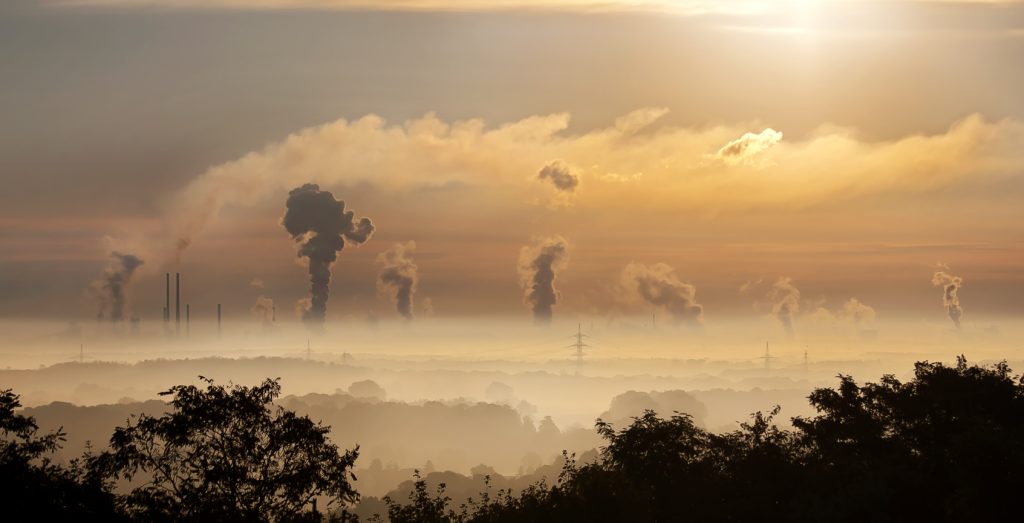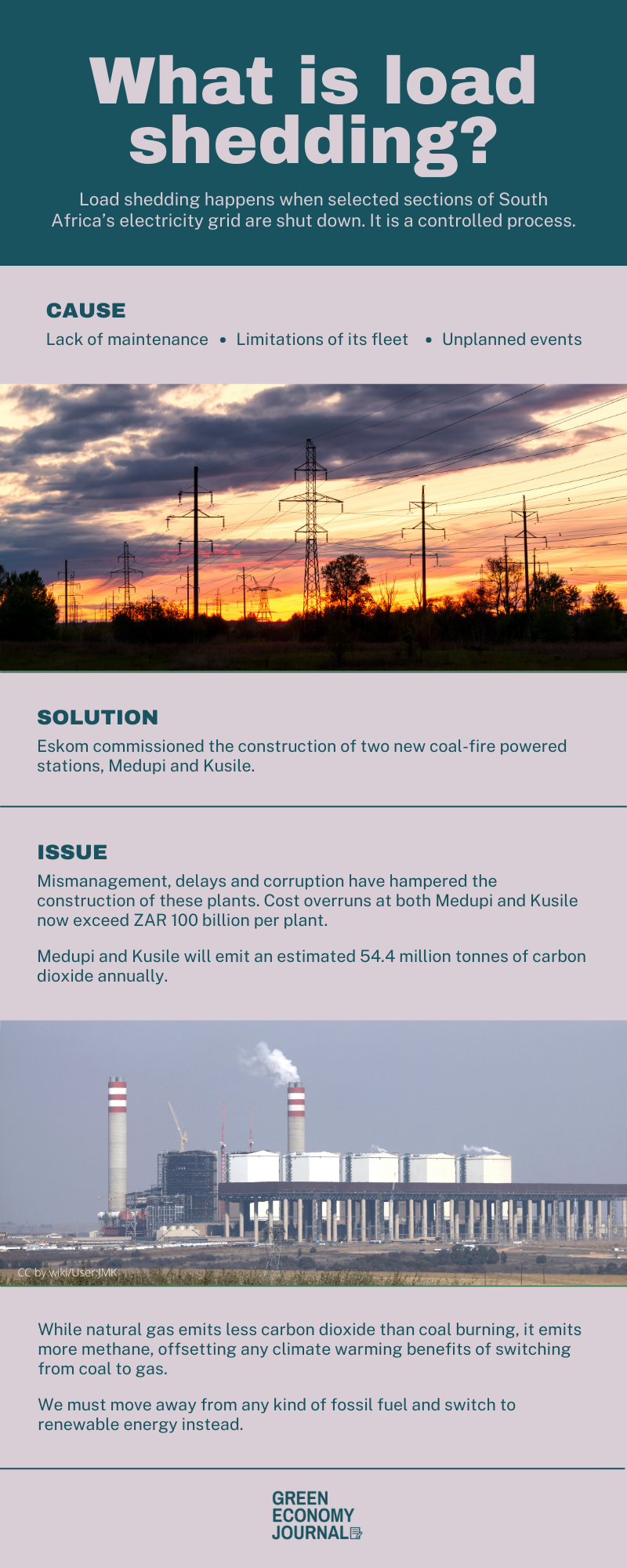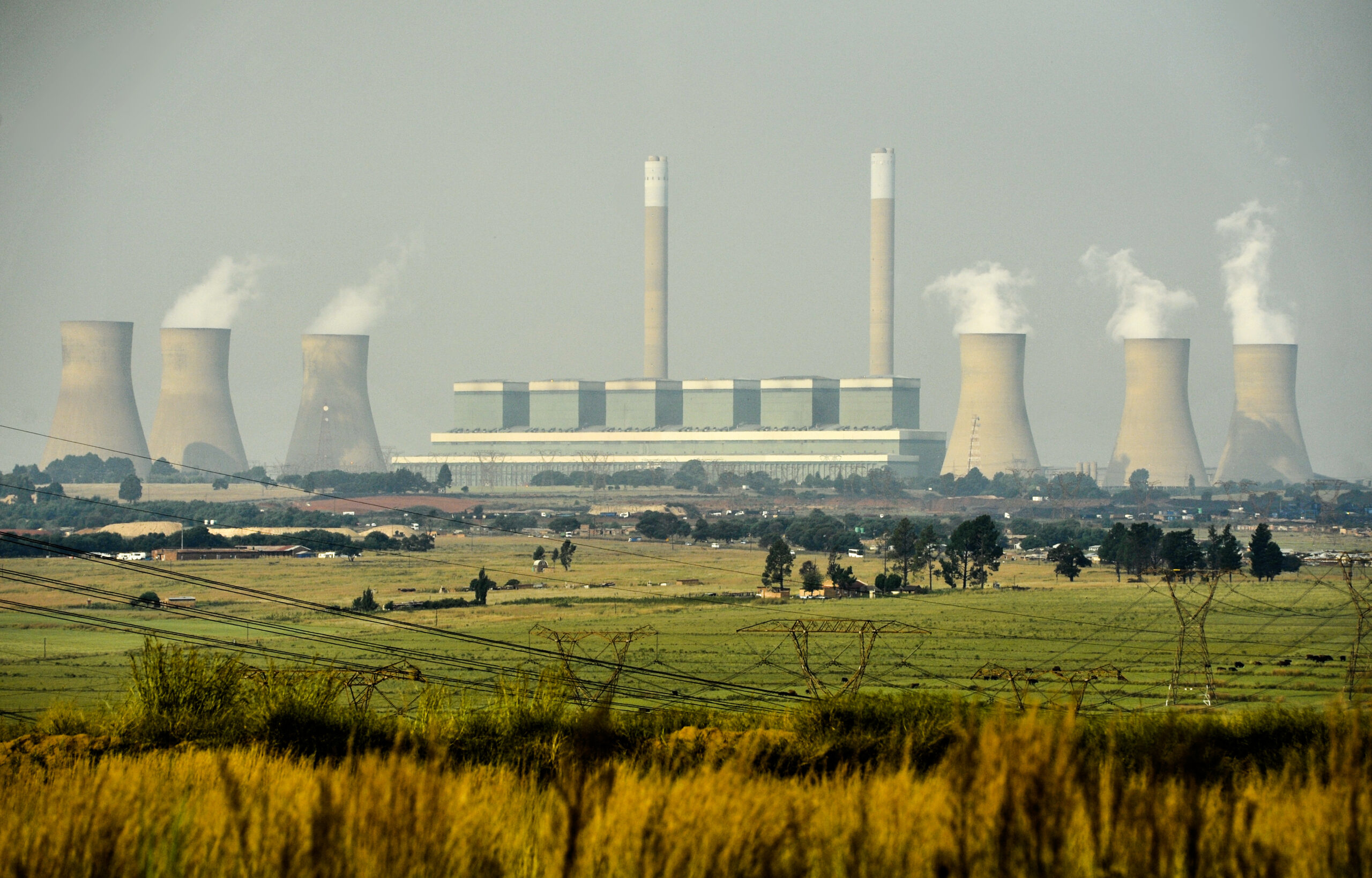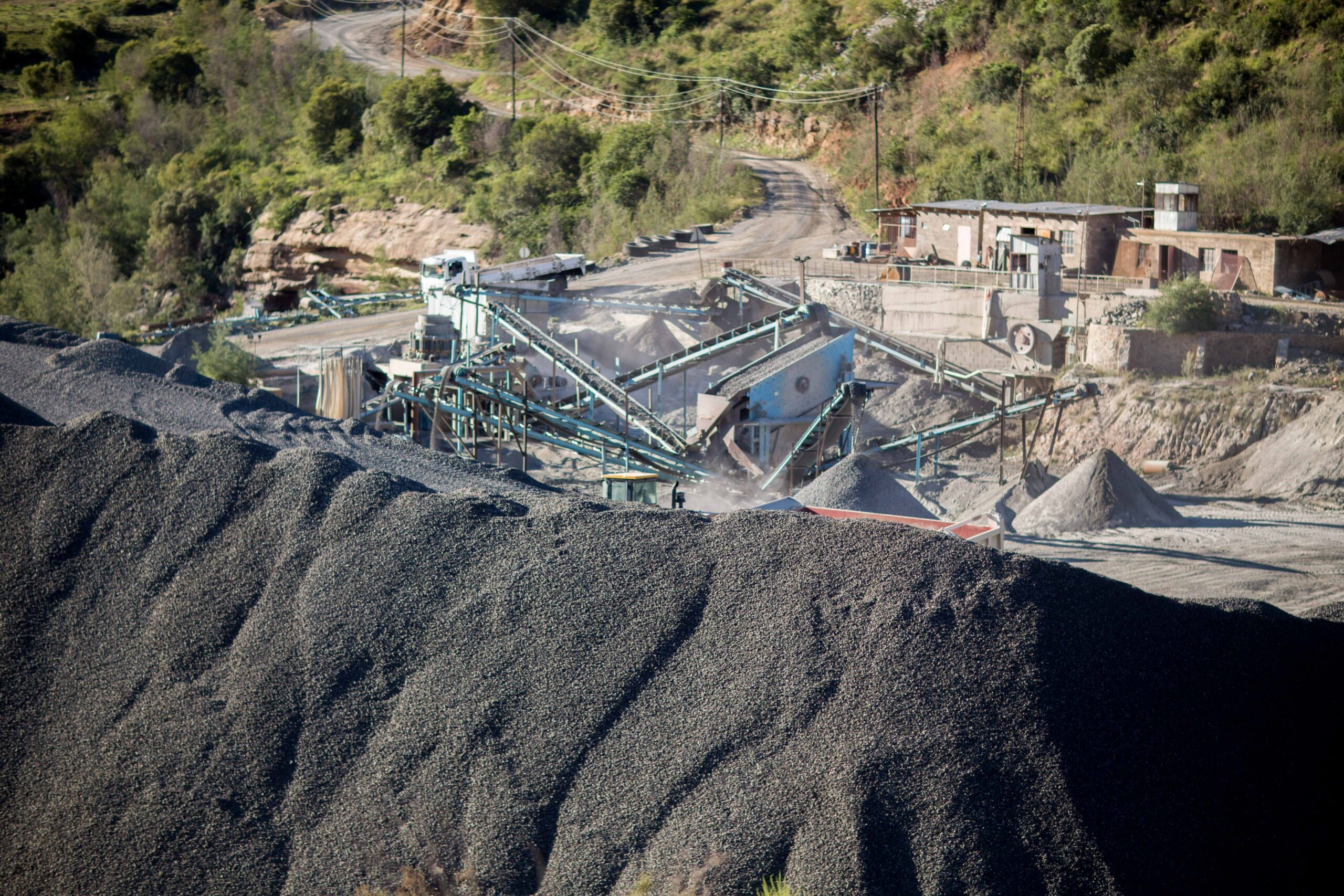How Eskom’s ageing coal fleet causes load shedding woes
Load shedding happens when selected sections of South Africa’s electricity grid are shut down. In literal terms, Eskom, the country’s power utility, “sheds” a certain “load” – or amount – of electricity from the national grid.
Load shedding vs a blackout
Load shedding is not the same as a power outage or blackout. It is a controlled process. A blackout, on the other hand, is not. A blackout typically happens when power demand outstrips power supply, crashing the grid. Load shedding has been a feature of South African life for about 13 years.
According to Eskom, load shedding occurs in response to unplanned events “to protect the electricity power system from a total blackout”. A total blackout would be devastating for the country, Eskom says. The electricity grid would need to restart from scratch. It would take weeks to restore electricity to the entire country.
Cost of load shedding
Load shedding comes at a high cost to the country. For every day that Eskom load sheds, the economy loses R2 billion.
Stages of load shedding
Eskom’s load shedding takes place in eight stages. 1000 megawatts (MW) of electricity must be “shed” from the grid at stage one. At stage two, 2000 MW must be shed, and so on. Eskom has never implemented stages seven and eight. However, Eskom implemented stage six load shedding at the end of 2019, for the first time, indicating that it had lost up to 40 per cent of its power generating capacity, according to an expert.
History of load shedding
Over 80 per cent of Eskom’s electricity comes from coal. But, Eskom’s coal power stations are old and poorly maintained. Furthermore, it has not brought on sufficient power to replace these environmentally disastrous power sources.

1990s
In 1998, Eskom was warned that power demand would outstrip supply by 2007. However, the power utility failed to act on this warning. Consequently, it did not invest in any additional power generation capacity.
2000s
Eskom implemented regional load shedding in 2006. National load shedding happened for the first time in early 2007. By January 2008, national load shedding occurred almost daily. Load shedding continued for two solid weeks. The government declared a national power emergency at the end of that month.
In 2009, South Africans were told that load shedding was not likely to happen again. Eskom put up a load shedding schedule on its website, but it did not foresee any need for it, former Eskom spokesperson Andrew Etzinger told Reuters.
2020s
Load shedding has only increased since then, with periods of stability punctuating extended periods of electricity outages. South Africans experienced over 800 hours of load shedding in 2020 – nearly 10 per cent of the entire year. This was the highest amount of load shedding since 2008, according to the Council for Scientific and Industrial Research (CSIR). What is more, load shedding shows no sign of going away.
Causes of load shedding
Lack of maintenance
Eskom spokesperson Sikonathi Mantshantsha says that a historical lack of maintenance on power plants is at the heart of South Africa’s unreliable electricity supply. For years, Eskom failed to undertake routine maintenance on its power plants, according to Eskom CEO Andre de Ruyter. Eskom’s coal fleet is also old, with many of its plants nearing retirement age. Its oldest plant, Komati, is 55 years old. The power utility is hamstrung by the age and poor condition of its power plants, according to Eskom’s head of generating units, Rhulani Mathebula.
Limitations of its fleet
Eskom has been frank in its assessment of the limitations of its current fleet. “The use of the generation fleet, specifically the coal fleet with an average age of 37 years, is stretched beyond its limits and exceeds international norms”, Eskom said in its 2019 financial statements.
Since January 2020, Eskom has returned to a planned maintenance schedule. This means more power cuts, but to maintain the grid rather than dealing with unplanned events.
Unplanned events
But unplanned events continue to hamper Eskom’s plans to keep the lights on. Eskom struggles to keep its coal-fired power stations going when rain wets its coal stockpiles. Eskom implemented load shedding in May 2021 due to unplanned plant breakdowns at its plants.
Economic problems caused by load shedding
Eskom’s total debt is well over R400 billion. This presents a significant risk to the economy.
The wasting of Eskom’s funds through corruption has contributed to this debt. Corruption has tainted Eskom contracts to the value of nearly R200 billion, investigative journalists have shown.
Solutions to load shedding
Medupi and Kusile
Eskom commissioned the construction of two new mega-power stations, Medupi and Kusile, to relieve some of the pressure on the grid. Medupi was commissioned in 2007. Kusile followed shortly after that. This would be the first time that Eskom had built coal-fire powered stations in 20 years.
Once completed, Kusile and Medupi would be the third and fourth biggest power stations in the world. Medupi and Kusile should have allowed Eskom to start winding down the rest of its ageing coal fleet.
Issues
But, mismanagement, delays and corruption have hampered the construction of these plants. Cost overruns at both Medupi and Kusile now exceed R100 billion per plant. Both power stations are years overdue. Kusile will only be completed in 2025. Medupi was completed in July 2021. This was four years after the original, planned date of completion.
Furthermore, both power stations have significant design flaws, which will cost billions to correct. Medupi was supposed to be the poster child for so-called “clean coal”. The plant was to be fitted with technology, such as flue gas desulphurisation equipment, as per a World Bank agreement. This equipment is designed to reduce the amount of greenhouse gases emitted into the air. But, these installations have not been done due to Eskom’s financial constraints. This technology will only be installed in 2025, according to Eskom.
But, Medupi will still not be “clean”. Coal mining inflicts serious environmental damage, even before the coal enters the power station. Coal mining results in the loss of arable land, acid mine drainage and dust emission (and the associated health risks). It also uses an extraordinary amount of clean water. The running of the flue gas desulphurisation equipment requires large amounts of water too. The infrastructure to transport this water to Medupi is not yet in place. De Ruyter has questioned the practicality of installing this at the power plant. He has suggested that investing in more renewables would be a better use of the funds. Medupi and Kusile will emit an estimated 54.4 million tonnes of carbon dioxide annually.
Eskom’s role in load shedding
With Medupi and Kusile incomplete, Eskom has had to run its older coal stations well past their limits. The cost of energy from renewable sources is now cheaper than that of the two new coal power plants, according to an expert.
It would make sense, then, for Eskom to turn its focus away from coal if it wants to prevent load shedding. This is exactly what De Ruyter has set out to do. De Ruyter says that he wants Eskom to invest heavily in renewable energy. He wants Eskom to do this by tapping into billions of rands in concessional green financing. This financing would come from developmental institutions.
The Eskom CEO has been frank in his assessment of the power utility’s coal prospects. “It is becoming virtually impossible to secure funding for new coal-generation projects, and insurance companies are targeting large carbon emitters with punitive premiums or outright refusal to cover, as they seek to address the root cause of increased claims caused by climate change”, he reportedly said.
An end in sight for load shedding
But De Ruyter is on a collision course with Energy Minister Gwede Mantashe. Mantashe has called moving away from coal “economic suicide”. Mantashe is a proponent of using natural gas to prop up Eskom’s fleet. He says that “gas will be a major factor in the transition (away from coal)”.

But while natural gas emits less carbon dioxide than coal burning, it emits more methane, offsetting any climate warming benefits of switching from coal to gas. Given the state of Eskom’s coal fleet, and the risk to the economy posed by the power utility’s parlous financial affairs, South Africa may be committing “economic suicide” by failing to transition away from coal.

Related Articles
Eskom: Green energy saves water
Generating electricity from fossil fuels has a hidden cost: South Africa’s already scarce supply of fresh water.
The false promise of ‘clean’ coal in South Africa
Even using the cleanest technology available, coal’s severe environmental, health and climate consequences remain unavoidable.




